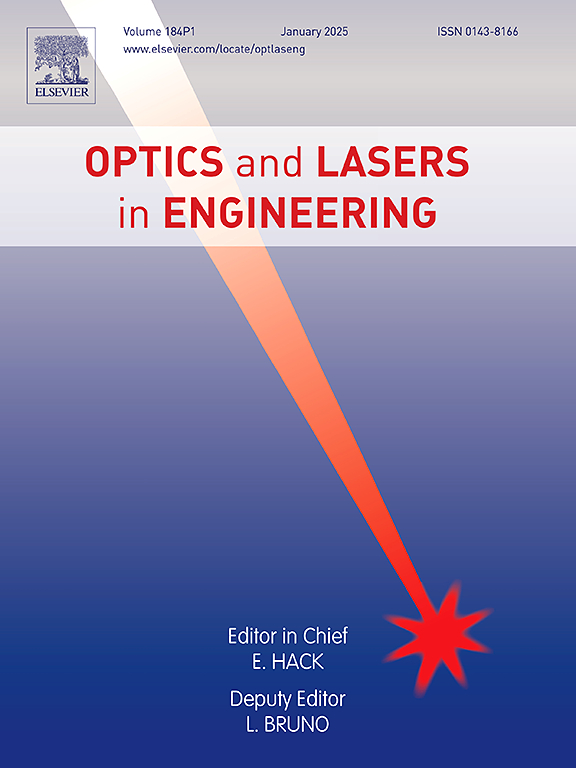Characterizing lateral distribution of complex refractive index based on quantitative amplitude-phase imaging (QAPI)
IF 3.5
2区 工程技术
Q2 OPTICS
引用次数: 0
Abstract
Accurate characterization of the complex refractive index is crucial for designing and optimizing optical devices. Existing methods for characterizing the complex refractive index, such as spectral-based characterization techniques, primarily focus on determining the refractive index of uniform materials, but face challenges in measuring the spatial distribution and achieving high efficiency. To tackle the problem, we propose a novel method based on quantitative amplitude-phase imaging (QAPI) for complex refractive index measurement. By incorporating a physical model, this method enables efficient reconstruction of the lateral distribution of the complex refractive index in a multipixel imaging setup, offering fast acquisition, high resolution, and a large field of view. The feasibility of the proposed method has been validated through both numerical simulations and experiments. Finally, the method is applied to experimentally characterize the complex refractive index distribution of Sb2S3 films after laser-induced phase transition, demonstrating its potential for practical material characterization and process monitoring in advanced manufacturing.
基于定量幅相成像(QAPI)的复折射率横向分布表征
精确表征复折射率对于设计和优化光学器件至关重要。现有的复折射率表征方法,如基于光谱的表征技术,主要集中在确定均匀材料的折射率,但在测量空间分布和实现高效率方面面临挑战。为了解决这个问题,我们提出了一种基于定量幅相成像(QAPI)的复折射率测量新方法。通过结合物理模型,该方法能够在多像素成像设置中有效地重建复杂折射率的横向分布,提供快速采集,高分辨率和大视场。通过数值模拟和实验验证了该方法的可行性。最后,应用该方法对激光诱导相变后的Sb2S3薄膜的复折射率分布进行了实验表征,证明了该方法在先进制造中实际材料表征和工艺监控方面的潜力。
本文章由计算机程序翻译,如有差异,请以英文原文为准。
求助全文
约1分钟内获得全文
求助全文
来源期刊

Optics and Lasers in Engineering
工程技术-光学
CiteScore
8.90
自引率
8.70%
发文量
384
审稿时长
42 days
期刊介绍:
Optics and Lasers in Engineering aims at providing an international forum for the interchange of information on the development of optical techniques and laser technology in engineering. Emphasis is placed on contributions targeted at the practical use of methods and devices, the development and enhancement of solutions and new theoretical concepts for experimental methods.
Optics and Lasers in Engineering reflects the main areas in which optical methods are being used and developed for an engineering environment. Manuscripts should offer clear evidence of novelty and significance. Papers focusing on parameter optimization or computational issues are not suitable. Similarly, papers focussed on an application rather than the optical method fall outside the journal''s scope. The scope of the journal is defined to include the following:
-Optical Metrology-
Optical Methods for 3D visualization and virtual engineering-
Optical Techniques for Microsystems-
Imaging, Microscopy and Adaptive Optics-
Computational Imaging-
Laser methods in manufacturing-
Integrated optical and photonic sensors-
Optics and Photonics in Life Science-
Hyperspectral and spectroscopic methods-
Infrared and Terahertz techniques
 求助内容:
求助内容: 应助结果提醒方式:
应助结果提醒方式:


